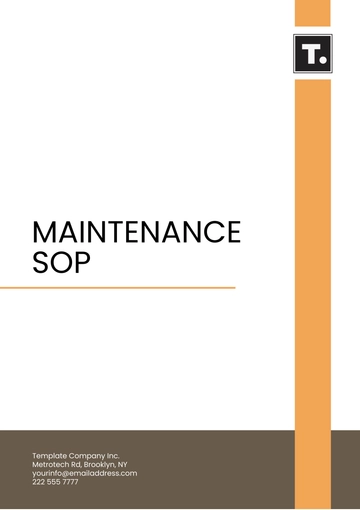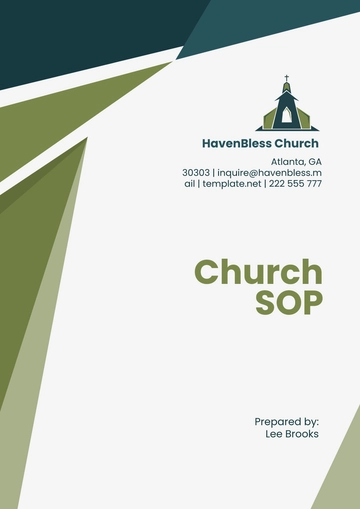Free Nursing Home Fire Safety SOP

I. Introduction
Purpose of the SOP
The Nursing Home Fire Safety Standard Operating Procedure (SOP) aims to establish a comprehensive framework for mitigating the risks associated with fire emergencies within our facility. By outlining clear procedures and protocols, this SOP seeks to minimize the potential for fire-related injuries, property damage, and disruptions to resident care and operations. Additionally, it serves to ensure compliance with local, state, and federal regulations governing fire safety in healthcare facilities, promoting a safe and secure environment for residents, staff members, and visitors alike.
Scope and Applicability
This SOP applies to all staff members, contractors, and volunteers working within the nursing home premises, irrespective of their role or department. It encompasses various aspects of fire safety, including prevention, detection, emergency response, and recovery efforts. Furthermore, it is designed to be adaptable to the specific needs and characteristics of our facility, accounting for factors such as building layout, resident demographics, and regulatory requirements.
Legal and Regulatory Compliance
In accordance with regulatory mandates and industry best practices, this SOP aligns with guidelines set forth by regulatory bodies such as the Occupational Safety and Health Administration (OSHA), the National Fire Protection Association (NFPA), and relevant state and local authorities. By adhering to these standards, we demonstrate our commitment to maintaining a safe and compliant environment for all stakeholders while mitigating legal and financial liabilities associated with non-compliance.
II. Emergency Response Plan
Overview of the Emergency Response Plan
The emergency response plan serves as a roadmap for coordinating our response to fire emergencies, encompassing pre-incident preparedness, incident management, and post-incident recovery phases. It outlines the roles and responsibilities of key personnel, establishes communication protocols, and delineates procedures for evacuating residents, summoning emergency services, and managing resources effectively. Additionally, it emphasizes the importance of continuous training, drills, and exercises to enhance staff readiness and ensure a swift, coordinated response in the event of a fire emergency.
Roles and Responsibilities of Staff Members
Each staff member is assigned specific roles and responsibilities based on their position, skills, and training level. This includes designating fire wardens responsible for leading evacuation efforts, assigning floor monitors to assist residents in navigating evacuation routes, and appointing communication liaisons to relay critical information to emergency services and facility management. By clearly defining roles and expectations, we enhance accountability and facilitate a coordinated response during high-stress situations.
Communication Protocols During a Fire Emergency
Effective communication is paramount to the success of our emergency response efforts. To this end, the emergency response plan outlines procedures for activating fire alarms, initiating internal and external communications, and disseminating critical information to staff members, residents, family members, and external stakeholders. This includes utilizing various communication devices such as two-way radios, intercom systems, and mobile phones, as well as establishing designated communication channels and protocols for relaying updates and instructions in real-time.
III. Fire Detection and Alarm Systems
Description of Fire Detection Systems
Our facility is equipped with a comprehensive array of fire detection systems designed to detect and alert occupants to the presence of smoke, heat, or flames in various areas of the building. These systems include smoke detectors, heat detectors, flame detectors, and manual pull stations strategically positioned throughout the facility to provide early warning of potential fire hazards. Additionally, our fire alarm system is interconnected with our building management system to ensure prompt notification of fire incidents to staff members and emergency services.
Testing and Maintenance Procedures for Fire Alarms
Regular testing and maintenance of our fire alarm systems are conducted in accordance with manufacturer specifications, industry standards, and regulatory requirements. This includes routine inspections, functional tests, sensitivity testing, and battery replacements to ensure the reliability and effectiveness of our fire detection systems. Furthermore, our maintenance records are meticulously documented and reviewed to track system performance, identify potential issues, and facilitate timely corrective actions as needed.
IV. Evacuation Procedures
Evacuation Routes and Assembly Points
Our facility is equipped with clearly marked evacuation routes and assembly points strategically located throughout the building to facilitate the safe and orderly evacuation of residents and staff members in the event of a fire emergency. These evacuation routes are designed to minimize travel distances, avoid potential hazards, and provide accessible pathways for residents with mobility impairments. Assembly points are situated in designated outdoor areas away from the building to ensure the safety and accountability of evacuees during emergency situations.
Procedures for Assisting Residents with Mobility Issues
Staff members are trained to provide assistance and support to residents with mobility issues during evacuation, utilizing specialized equipment and techniques as necessary. This includes deploying evacuation chairs, wheelchairs, and mobility aids, as well as providing physical assistance and guidance to residents with limited mobility. Additionally, designated staff members are assigned to specific areas or units to prioritize the evacuation of residents requiring assistance and ensure their safe egress from the building.
V. Staff Training
Requirements for Fire Safety Training
All staff members are required to undergo comprehensive fire safety training upon hire and participate in regular refresher training sessions to maintain proficiency and awareness. Our training curriculum covers a wide range of topics, including fire prevention, emergency evacuation procedures, fire extinguisher operation, hazard recognition, and situational awareness. Training sessions are conducted by certified instructors and tailored to the specific roles and responsibilities of each staff member to ensure relevance and effectiveness.
Training on the Use of Firefighting Equipment
Staff members receive hands-on training on the proper use and operation of firefighting equipment, including fire extinguishers, fire hoses, and fire blankets. Training sessions include practical demonstrations, scenario-based exercises, and proficiency assessments to assess competency and reinforce key concepts. Additionally, staff members are educated on the different classes of fires, appropriate extinguishing agents, and safety precautions to minimize risks and maximize effectiveness during fire suppression efforts.
Emergency Evacuation Procedures Training
Staff members participate in regular emergency evacuation drills and exercises to familiarize themselves with evacuation procedures, evacuation routes, and their assigned roles and responsibilities during a fire emergency. These drills simulate various emergency scenarios and allow staff members to practice effective communication, decision-making, and coordination under realistic conditions. Feedback and debriefing sessions following drills provide valuable insights for continuous improvement and refinement of our emergency response capabilities.
Documentation of Staff Training Activities
Records of staff training activities, including attendance sheets, training materials, and evaluations, are meticulously maintained in accordance with regulatory requirements. These records serve as evidence of compliance with training mandates and demonstrate our commitment to staff development and competency assurance. Additionally, training documentation provides valuable insights for identifying training needs, tracking staff progress, and evaluating the effectiveness of our training programs over time.
VI. Firefighting Equipment
Types and Locations of Firefighting Equipment
Our facility is equipped with a comprehensive array of firefighting equipment strategically positioned throughout the building to facilitate rapid response and containment of fire incidents. This includes portable fire extinguishers, fire hoses, fire blankets, and automatic fire suppression systems installed in high-risk areas such as kitchens, laundry rooms, and mechanical rooms. Equipment locations are clearly marked, easily accessible, and regularly inspected to ensure readiness and compliance with regulatory standards.
Instructions for the Proper Use of Fire Extinguishers, Hoses, and Blankets
Staff members receive thorough training on the proper use and operation of firefighting equipment, emphasizing safety protocols, proper techniques, and potential hazards associated with fire suppression activities. Training includes hands-on demonstrations, interactive simulations, and practical exercises to familiarize staff members with equipment features, limitations, and maintenance requirements. Additionally, staff members are instructed to prioritize personal safety and evacuate residents before attempting to suppress a fire if conditions become unsafe or untenable.
Maintenance and Inspection Schedules for Firefighting Equipment
Our firefighting equipment undergoes regular inspection, testing, and maintenance by qualified personnel in accordance with manufacturer specifications, industry standards, and regulatory requirements. This includes routine visual inspections, functional tests, pressure checks, and refills/replacements of extinguishing agents as needed. Maintenance schedules are established, documented, and adhered to diligently to ensure the reliability, effectiveness, and compliance of our firefighting equipment with applicable regulations and standards.
VII. Communication Protocols
Procedures for Communicating During a Fire Emergency
Effective communication is paramount to the success of our emergency response efforts. Clear communication protocols are established to facilitate rapid dissemination of critical information to staff members, residents, family members, and external stakeholders during a fire emergency. This includes designated communication channels, predefined call lists, and standardized message templates to ensure consistency and accuracy in information sharing. Additionally, communication systems such as two-way radios, intercoms, and emergency notification systems are tested regularly to verify functionality and reliability.
Activation of Emergency Communication Systems
Upon detection of a fire emergency, designated personnel are responsible for activating emergency communication systems, including fire alarm panels, public address systems, and emergency call buttons, to alert occupants and initiate emergency response procedures. This activation triggers audible and visual alarms, broadcasts pre-recorded evacuation instructions, and alerts emergency services for immediate assistance. Staff members are trained to respond promptly to alarm notifications and follow established communication protocols to ensure timely and effective communication during high-stress situations.
Coordination with Emergency Services and External Stakeholders
The nursing home maintains open lines of communication with local fire departments, emergency medical services (EMS), and other external stakeholders to coordinate emergency response efforts, share critical information, and request assistance as needed. Communication protocols are established to facilitate seamless collaboration and information exchange between facility personnel and external responders, ensuring a coordinated and effective response to fire emergencies. Regular communication drills and tabletop exercises are conducted to test communication systems and enhance interoperability between internal and external partners.
VIII. Drills and Exercises
Requirements for Conducting Regular Fire Drills and Exercises
Fire drills and exercises are conducted regularly to assess staff readiness, evaluate the effectiveness of emergency procedures, and identify areas for improvement. These drills simulate various emergency scenarios, including different fire locations, evacuation routes, and response challenges, to provide staff members with practical experience and confidence in their ability to respond effectively. Drills are conducted at least quarterly, with additional drills scheduled as needed based on facility-specific risks, changes in occupancy, or regulatory requirements.
Evaluation of Staff Performance During Drills
Staff performance during fire drills is evaluated based on adherence to established procedures, efficiency in evacuating residents, effectiveness in communication, and overall response to the simulated emergency scenario. Observers and evaluators assess staff actions, decision-making processes, and teamwork dynamics to identify strengths, weaknesses, and areas for improvement. Feedback and debriefing sessions following drills provide valuable insights for enhancing staff readiness, refining emergency procedures, and addressing training needs.
Documentation of Drill Results and Recommendations for Improvement
Records of fire drill results, including observations, recommendations, and corrective actions, are maintained for review by management and regulatory agencies. These records document the outcomes of drills, including response times, evacuation rates, and any issues or challenges encountered during the exercise. Recommendations for improvement are documented and prioritized based on their impact on emergency preparedness, with action plans developed to address identified deficiencies and enhance the effectiveness of our emergency response capabilities.
IX. Maintenance and Inspection
Procedures for Regular Inspection and Maintenance of Fire Safety Systems and Equipment
Fire safety systems and equipment undergo regular inspection, testing, and maintenance to ensure optimal functionality and compliance with regulatory standards. Qualified personnel conduct routine inspections according to manufacturer specifications and industry best practices, including visual checks, functional tests, and performance evaluations. Maintenance activities are documented, and any deficiencies or anomalies identified during inspections are promptly addressed through corrective actions to mitigate potential risks and ensure the reliability and effectiveness of our fire safety systems and equipment.
Documentation of Maintenance Activities and Inspection Reports
Records of maintenance activities, including inspection reports, testing results, and maintenance schedules, are meticulously maintained for review by management and regulatory agencies. These records provide a comprehensive overview of the maintenance history, status, and performance of our fire safety systems and equipment, facilitating transparency, accountability, and compliance with regulatory requirements. Additionally, maintenance documentation serves as a valuable resource for tracking maintenance intervals, identifying recurring issues, and informing decision-making processes related to equipment upgrades, replacements, or modifications.
Correction of Deficiencies and Follow-Up Actions
Any deficiencies or deviations identified during inspections are promptly addressed through corrective actions to ensure the continued safety and integrity of our fire safety systems and equipment. This may involve repairing malfunctioning components, replacing worn-out parts, recalibrating sensors, or upgrading systems to meet current standards and requirements. Follow-up inspections and tests are conducted to verify the effectiveness of corrective actions and ensure that deficiencies have been adequately addressed, with documentation maintained to track resolution status and validate compliance with regulatory mandates.
X. Documentation
Requirements for Documenting Fire Safety SOPs, Training Activities, Drills, Inspections, and Incidents
Comprehensive documentation is essential for maintaining transparency, accountability, and compliance with regulatory requirements related to fire safety. Records of fire safety SOPs, training activities, drills, inspections, and incidents are meticulously maintained in accordance with established protocols and regulatory mandates. This includes maintaining up-to-date copies of the SOP, documenting attendance and completion of training activities, recording the outcomes of drills and inspections, and documenting any fire-related incidents or near misses for review and analysis.
Recordkeeping Procedures and Storage of Documentation
Records related to fire safety are securely stored and organized to ensure accessibility, accuracy, and confidentiality. Electronic or hard-copy records are maintained in designated repositories, with access restricted to authorized personnel to protect sensitive information and maintain data integrity. Backup procedures are implemented to safeguard against data loss or corruption, with redundancy measures in place to ensure continuity of recordkeeping operations in the event of emergencies or system failures.
Review and Revision of SOPs as Needed
Fire safety SOPs are periodically reviewed and updated to reflect changes in regulations, industry standards, facility operations, and lessons learned from drills, inspections, and incidents. This iterative process ensures that SOPs remain current, relevant, and effective in mitigating fire risks and promoting a culture of safety within the facility. Reviews are conducted by designated personnel or committees with expertise in fire safety, emergency management, and regulatory compliance, with revisions implemented based on consensus decisions and stakeholder input.
XI. Regulatory Compliance
Compliance with Local, State, and Federal Regulations
Our facility is committed to adhering to all relevant regulations and guidelines established by local, state, and federal authorities pertaining to fire safety in healthcare facilities. This includes compliance with regulations set forth by agencies such as the Occupational Safety and Health Administration (OSHA), the National Fire Protection Association (NFPA), and state fire marshals. By ensuring compliance with these regulations, we uphold the highest standards of safety and accountability, protecting the well-being of our residents, staff members, and visitors.
Review of Regulatory Requirements and Updates
Regulatory requirements related to fire safety are continuously monitored and reviewed to stay abreast of changes, updates, and emerging best practices. This includes regular review of regulatory publications, participation in industry forums and seminars, and engagement with regulatory agencies to seek clarification and guidance on compliance matters. By staying informed about regulatory developments, we can proactively adapt our policies, procedures, and practices to maintain compliance and mitigate potential risks associated with non-compliance.
Implementation of Changes to Ensure Ongoing Compliance
Any changes or updates to regulatory requirements are promptly evaluated, and necessary changes are implemented to ensure ongoing compliance. This may involve revising policies, procedures, training programs, or physical infrastructure to align with new regulations or standards. Additionally, staff members are educated and trained on any changes to ensure awareness and understanding of their roles and responsibilities in maintaining compliance with regulatory requirements. Regular audits and self-assessments are conducted to verify compliance status and identify areas for improvement or corrective action.
XII. Appendices
Additional Resources, Forms, and Templates
This section includes supplementary resources, forms, templates, and reference materials related to fire safety. These resources may include evacuation maps, emergency contact lists, incident reporting forms, and training materials. By providing access to these resources, staff members have the necessary tools and information to effectively implement fire safety protocols and procedures.
Contact Information for Emergency Services and External Stakeholders
Contact information for local fire departments, emergency medical services (EMS), law enforcement agencies, and other external stakeholders is provided for quick reference during emergencies. This ensures timely communication and coordination with external responders and facilitates a swift and effective response to fire emergencies.
- 100% Customizable, free editor
- Access 1 Million+ Templates, photo’s & graphics
- Download or share as a template
- Click and replace photos, graphics, text, backgrounds
- Resize, crop, AI write & more
- Access advanced editor
Introducing Template.net's Nursing Home Fire Safety SOP Template. This editable and customizable template offers a comprehensive solution for creating a tailored Standard Operating Procedure. With our intuitive AI Editor Tool, effortlessly craft protocols for emergency response, evacuation procedures, staff training, and more. Ensure regulatory compliance and safeguard residents with this essential resource.





























